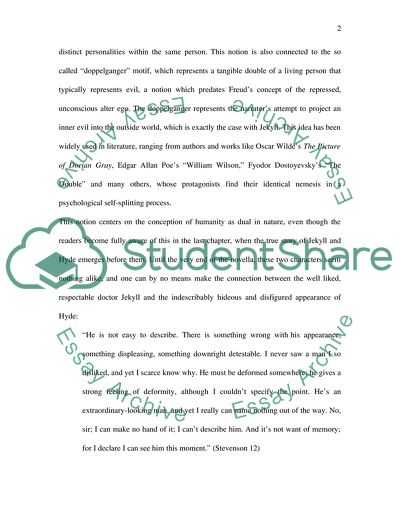Cite this document
(“Psychological Criticism Used towards The Strange Case of Dr. Jekyll Term Paper - 1”, n.d.)
Psychological Criticism Used towards The Strange Case of Dr. Jekyll Term Paper - 1. Retrieved from https://studentshare.org/psychology/1752210-psychological-criticism-used-towards-the-story-the-strange-case-of-dr-jeckyl-and-mr-hyde
Psychological Criticism Used towards The Strange Case of Dr. Jekyll Term Paper - 1. Retrieved from https://studentshare.org/psychology/1752210-psychological-criticism-used-towards-the-story-the-strange-case-of-dr-jeckyl-and-mr-hyde
(Psychological Criticism Used towards The Strange Case of Dr. Jekyll Term Paper - 1)
Psychological Criticism Used towards The Strange Case of Dr. Jekyll Term Paper - 1. https://studentshare.org/psychology/1752210-psychological-criticism-used-towards-the-story-the-strange-case-of-dr-jeckyl-and-mr-hyde.
Psychological Criticism Used towards The Strange Case of Dr. Jekyll Term Paper - 1. https://studentshare.org/psychology/1752210-psychological-criticism-used-towards-the-story-the-strange-case-of-dr-jeckyl-and-mr-hyde.
“Psychological Criticism Used towards The Strange Case of Dr. Jekyll Term Paper - 1”, n.d. https://studentshare.org/psychology/1752210-psychological-criticism-used-towards-the-story-the-strange-case-of-dr-jeckyl-and-mr-hyde.


